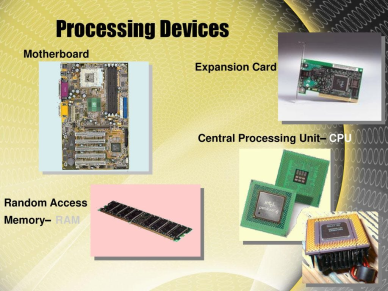Entrance Announcement
MICTE 2080
2080 Magh 07
User:Aasha parajuli Real teaching lesson plan6
Subject: Computer Science
Class: 6
Unit: 2
Topic: Processing Hardware
Number of Student: 65
School Name: Adarsha School
Time: 45 minutes
Objective:
By the end of this lesson, students will be able to:
- Define processing hardware and its role in a computer system.
- Identify and describe the main components of processing hardware.
- Understand the basic functioning of a CPU.
Materials:
- Whiteboard and markers
- PowerPoint presentation or posters illustrating processing hardware components
1. Introduction (5 minutes)
- Greet the students and introduce the topic of processing hardware..
2. Definition and Role of Processing Hardware (10 minutes)
- The physical component of the computer that processes data and produces result is called processing hardware.
- Its process data gives with the help of instructions and produces output.
- CPU is the central processing unit of the computer.
- Discuss the role of processing hardware in performing tasks such as calculations, data processing, and running applications.
3. Main Components of Processing Hardware (15 minutes)
- Present a PowerPoint or use posters to introduce and explain the main components of processing hardware:

- Central Processing Unit (CPU):The central processing unit is the primary components of a computer that acts as its a "control center".
- The CPU, also referred to as the "central" or "main" processor.
- The CPU is the brain of the computer, responsible for executing instructions and performing calculations.
- Memory (RAM):
- Memory is the faculty of the mind by which data or information is encoded, stored, and retrieved when needed.
- Describe RAM as temporary storage used by the CPU to store data and instructions that are actively being processed.
- Motherboard:
- Explain that the motherboard is the main circuit board of the computer, connecting all other components.
- A motherboard is the main printed circuit board in general purpose computer and other expandable system.
- Graphics Processing Unit (GPU):
- Discuss the GPU's role in rendering images and graphics, especially in tasks like gaming and video editing.
4. Understanding the CPU (10 minutes)
- Focus on the CPU as the central component of processing hardware.
- Explain the basic functioning of a CPU:

- Fetch:
- The CPU retrieves instructions from the computer's memory.
- Decode:
- The CPU interprets these instructions into a form it can understand.
- Execute:
- The CPU carries out the instructions, performing calculations or operations.
- Use analogies or visual aids to help students understand these processes.
5. Conclusion and Recap (5 minutes)
- Summarize the key points about processing hardware discussed in the lesson.
- Encourage students to ask questions and clarify any doubts they may have.
- Assign a simple homework task, such as researching different types of CPUs or creating a diagram of processing hardware components.
Assessment:
- Informal assessment based on class participation, engagement, and understanding demonstrated during discussions and activities.
- Review homework submissions for comprehension and effort.